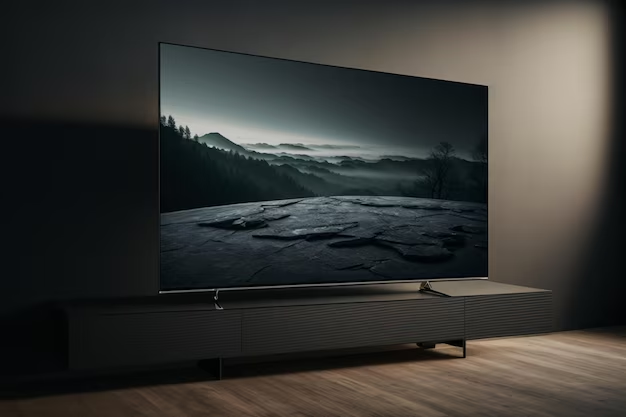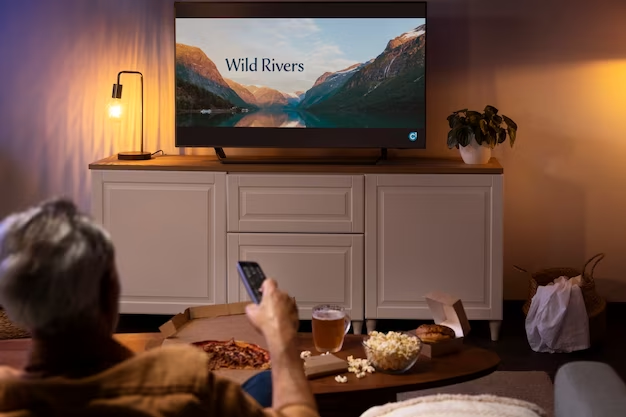In today’s fast-paced world of technology, television displays have come a long way. 4K TVs, also known as Ultra High Definition (UHD) TVs, offer stunning picture quality, vibrant colors, and exceptional clarity. But how can you tell if your TV is truly 4K? From resolution and screen size to model specifications, we’ve got you covered.
Understanding 4K Resolution
4K resolution, with its 3840 x 2160 pixel count, offers four times the number of pixels compared to Full HD (1080p) displays. This increase in pixel density results in incredibly sharp images and enhanced details. To check if your TV supports 4K resolution, navigate to the display settings. Look for the resolution options and ensure that 3840 x 2160 (or something similar) is available.
Exploring Screen Size
Screen size plays a crucial role in determining if your TV is 4K. Generally, 4K TVs are larger, as the higher resolution becomes more noticeable on bigger screens. If you have a smaller TV, say around 32 inches, the difference between 4K and Full HD might not be as apparent. Measure your TV’s diagonal screen size and compare it to the resolution to get a clearer idea.
Identifying 4K-Capable Ports
One of the simplest ways to verify if your TV supports 4K is by checking its ports. 4K content requires higher data transfer rates, which is achieved through HDMI 2.0 or higher ports. Look for HDMI ports labeled as 2.0 or HDCP 2.2. Additionally, some TVs come with DisplayPort options, which also support 4K resolution.
Checking for 4K-Specific Apps
Smart TVs often come with pre-installed apps optimized for 4K content. If your TV is 4K-capable, you should find popular streaming services like Netflix, Amazon Prime Video, or YouTube offering 4K content. Launch the apps and search for 4K videos to test your TV’s capabilities.
Analyzing Model Specifications
If you still have doubts about your TV’s resolution, consult the user manual or visit the manufacturer’s website to find detailed specifications. Look for terms like UHD, 4K Ultra HD, or 2160p. Pay attention to any specific model numbers associated with 4K, as some TV models may have different variations.
Differentiating Between 4K and Upscaled Content
Some TVs use upscaling technology to enhance lower-resolution content to appear closer to 4K quality. While this might improve the visuals, it’s not true 4K. To differentiate between native 4K and upscaled content, watch a true 4K video and an upscaled Full HD video side by side. The difference in clarity should be apparent.

Using a 4K Test Pattern
Another method to confirm your TV’s 4K capabilities is by using a 4K test pattern. Several websites and apps offer test patterns specifically designed for 4K resolution. These patterns help assess your TV’s ability to display fine details and sharpness.
Understanding HDR Compatibility
High Dynamic Range (HDR) technology further enhances the image quality on 4K TVs by providing greater contrast and a broader range of colors. To determine if your TV supports HDR, check for HDR compatibility in the settings or refer to the product specifications.
Checking Your TV’s Native Apps
Many 4K TVs have built-in apps designed for 4K streaming. Open your TV’s native apps and search for 4K content. This will confirm if your TV is capable of accessing and playing 4K videos directly from its apps.
Verifying with Manufacturer Support
If all else fails, reach out to the manufacturer’s customer support. They can provide detailed information about your TV’s specifications and answer any specific queries you might have about its 4K capabilities.
Exploring Different 4K TV Brands
There are numerous TV brands offering 4K models, each with its unique features and technologies. Here are some popular 4K TV brands to consider:
- Samsung: Known for its QLED technology, Samsung offers stunning picture quality and vibrant colors in their 4K TVs. Their Smart Hub provides easy access to 4K streaming apps;
- LG: LG’s OLED technology delivers exceptional contrast and deep blacks, making their 4K TVs perfect for movie enthusiasts. Their webOS platform offers a user-friendly experience for accessing 4K content;
- Sony: Sony’s Bravia series boasts impressive image processing and upscaling capabilities, ensuring top-notch 4K visuals. Their Android TV platform allows easy navigation and access to a wide range of apps;
- TCL: Offering more budget-friendly options, TCL’s 4K TVs provide great value for money. They often include Roku TV, providing seamless access to 4K streaming services.

How to Optimize 4K Picture Settings
Even if your TV is 4K-capable, it might not be set up correctly to deliver the best picture quality. Follow these steps to optimize your 4K TV’s picture settings:
- Choose the Right Picture Mode: Most TVs have various picture modes like Standard, Movie, and Vivid. Select the Movie or Cinema mode for the most accurate colors and natural picture;
- Adjust Brightness and Contrast: Set the brightness and contrast levels appropriately to avoid dark or washed-out images;
- Fine-Tune Color Settings: Use the color temperature settings to achieve the most natural color balance;
- Disable Motion Smoothing: Motion smoothing can make content look unnatural. Turn it off for a more authentic viewing experience;
- Enable HDR: If your TV supports HDR, ensure it is enabled in the settings to enjoy enhanced contrast and colors in supported content.
Top 4K Streaming Services
To fully appreciate your 4K TV’s capabilities, subscribe to some of the top 4K streaming services:
- Netflix: Offers a vast library of 4K content, including original series, movies, and documentaries;
- Amazon Prime Video: Provides an extensive selection of 4K movies and TV shows, including Amazon Originals;
- Disney+: The home of many 4K Marvel, Star Wars, and Disney classics, along with original 4K content;
- YouTube: A treasure trove of 4K videos, including nature documentaries, travel vlogs, and more.
Future of 4K Technology
As technology continues to advance, the future of 4K is promising. Here are some potential developments to look forward to:
- 8K TVs: While 4K is still gaining popularity, 8K TVs are on the horizon, offering even higher resolution and more immersive experiences;
- HFR (High Frame Rate): Higher frame rates, like 120fps, could become more common, delivering smoother and more lifelike motion in 4K content;
- Improved HDR Standards: New HDR standards may emerge, offering even better contrast and a wider range of colors;
- AR and VR Integration: 4K visuals could enhance the AR and VR experiences, creating more realistic and immersive virtual worlds.
Conclusion
Now that you’re armed with the knowledge on how to tell if your TV is 4K, you can enjoy the breathtaking clarity and vividness of ultra-high-definition content. Remember to check resolution settings, screen size, ports, apps, and model specifications to ensure you’re getting the most out of your TV’s capabilities. Embrace the world of 4K entertainment and indulge in immersive viewing experiences like never before.



